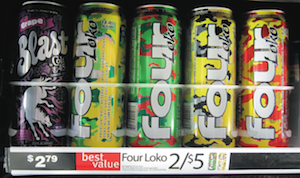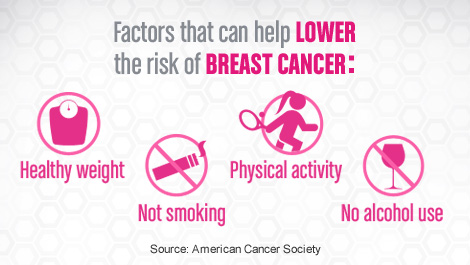Blog
Speculation on Big Beer Mergers Abounds
- Details
- Created: Monday, October 06 2014 11:09

The two behemoths are the result of a decade of mergers and acquisitions, consolidating dozens of companies into a Big Beer duopoly that controls 30% of the world's beer market. U.S. antitrust regulators are not expected to block the deal, and have raised few concerns over past mergers. A-B InBev's 2013 acquisition of Grupo Modelo (producers of Corona) raised eyebrows at the U.S. Department of Justice, but the deal was approved with only minor concessions, paving the way for A-B InBev to swallow SABMiller.
The consolidation of corporate power created by an A-B InBev/SABMiller merger would result in an unprecedented, oppressive influence over alcohol policy around the globe. In the U.S., both companies are a relentless presence, both overt and subliminal, undermining alcohol regulation. A-B InBev is one of the highest U.S. spenders on lobbying, shelling out $20.8 million since 2008. SABMiller, operating in the U.S. as MillerCoors in a joint venture with Molson Coors, has spent $13.1 million since 2008. Their efforts have sucessfully chipped away at the three-tier system that separates alcohol production, distribution and sales in the U.S., designed to protect public health and safety. The latest blatant attempt to circumvent this system is A-B InBev's move to purchase of a distributorship in Kentucky. The Duopoly has also successfully opposed any increase in the federal excise tax since 1991, costing the U.S. government millions in inflation erosion, while economic harm from excessive alcohol consumption now costs U.S. governments over $94 billion a year. Nevertheless, the beer lobby, led by A-B InBev and MillerCoors, sponsors legislation to decrease the Federal beer tax each year, under the moniker "Brewers Excise and Economic Relief Act." A-B InBev reported $43.2 billion in revenue in 2013; SABMiller reported $34.5 billion.
The merger would be disastrous for other countries as well, particularly those in the developing world. SABMiller and A-B InBev vie for domination of emerging markets in Asia, Latin America, and Africa, where their growth depends upon ever-increasing consumption, while consumption levels have nearly reached saturation in North America and Europe. According to the 2014 World Health Organization's (WHO) Global Status Report on Alcohol, countries with lower per-capita income tend to consume less alcohol; however, alcohol-attributable mortality and burden of disease and injury will generally be greater in societies with lower economic development than in more affluent societies. Over the past decade, aggressive marketing tactics by SABMiller and A-B InBev have resulted in increased per capita consumption across these developing regions, and increased alcohol-related harm has followed.
Big Beer aggressively and consistently interferes with efforts to enact evidence-based policy to reduce alcohol-related harm and resulting costs. Corporations exert pressure and influence with organizations like the the Global Alcohol Producers Group (GAPG), with goals to block reasonable, researched alcohol policy recommendations from WHO while making public statements to sound like public health support. Examples of such interference include blocking minimum pricing in Britain and a ban on alcohol advertising in South Africa. Many of the countries in developing regions targeted by SABMiller and A-B InBev have weak alcohol policies, and are particularly vulnerable to such interference because of Big Beer's political and economic clout.
The WHO position remains that all necessary measures should be taken to protect the formulation of health policies from distortion by commercial or vested interests; therefore the alcohol industry has no role in the formulation of alcohol policies. Yet Big Beer (and the rest of Big Alcohol) continues to assert its will and demand for profits over public health policy, and a combined A-B InBev/SABMiller will wield an even bigger stick against policymakers attempting to protect the public from alcohol-related harm. An A-B InBev/SABMiller merger would have an incredibly negative impact on health and safety for populations around the globe.
San Rafael, CA Mayor Calls for Reduced Access to Cheap Alcohol
- Details
- Created: Monday, October 06 2014 10:42

Mayor Phillips has the right idea: reducing availability and access to cheap alcohol helps decrease community alcohol problems. However, he should expand his request to include alcopops: bubbly, sweet, and often high-alcohol drinks that are attractive to youth and frequently sold in single-serve, 23.5 oz cans. Popular alcopops include Four Loko, at 12.5% ABV, which is often called "binge-in-a-can" because the alcohol content in one 23.5-oz can is equivalent to almost 5 standard beers. While intoxicated homeless people may be a more visible problem than underage drinkers, Mayor Phillips admits that malt beverages are also targeted at youth. According to the California Healthy Kids Survey, 15% to 33% of Marin high schoolers report having engaged in binge drinking in the past month.
Alcohol Justice has long called for alcohol retailers to implement city- and countywide Alcopop-Free Zones. The San Rafael City Council and Marin County Board of Supervisors have both passed resolutions in support, and Colonial Liquors was one of the first retailers to voluntarily remove alcopops from its shelves. Alcohol Justice encourages Mayor Phillips to protect youth by supporting the San Rafael Alcopop-Free Zone.
New Study: Moderate Alcohol Consumption Linked to Breast Cancer
- Details
- Created: Monday, October 06 2014 10:12

A new study from the University of Victoria has confirmed the statistical link between moderate alcohol consumption and breast cancer, with results showing that women consuming 2 drinks per day are 8.5% more likely to develop cancer than those who abstain. Women who drink 3 drinks or more per day are at a 37% risk increase. In 2011, more than 220,000 women were diagnosed with breast cancer in the U.S.; 40,931 died from the disease.
Despite a substantial body of research showing that regular alcohol consumption is related to several types of cancer, the alcohol industry has long used pinkwashing to use breast cancer awareness in its product promotion; funded spurious research to link alcohol to health benefits; and lobbied aggressively to influence the USDA dietary guidelines to include and encourage daily alcohol consumption.
Read our fact sheet on alcohol and cancer risk here.
October is Breast Cancer Industry Month. Read about the Think Before You Pink Campaign here.
More Articles ...
Subcategories
Help us hold Big Alcohol accountable for the harm its products cause.
| GET ACTION ALERTS AND eNEWS |
STAY CONNECTED    |
CONTACT US 24 Belvedere St. San Rafael, CA 94901 415-456-5692 |
SUPPORT US Terms of Service & Privacy Policy |


